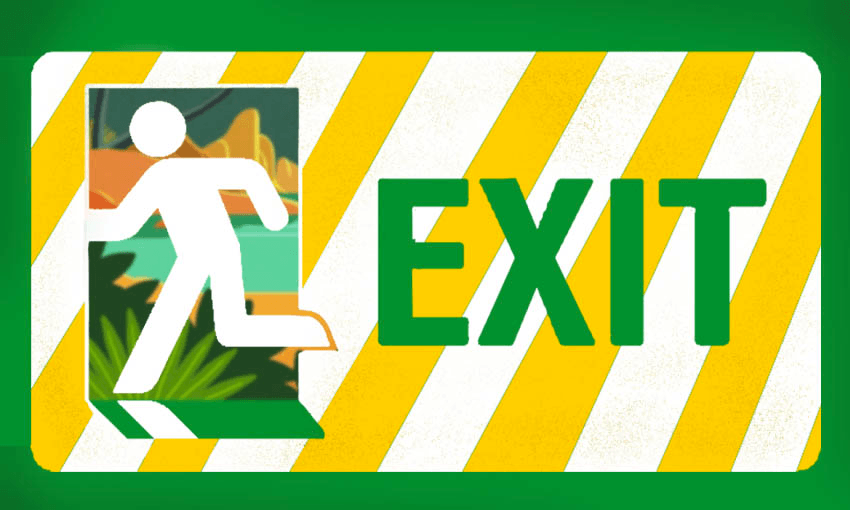The country’s coronavirus restrictions might be coming to an end sooner than you think. Justin Giovannetti looks at what level one rules mean for you.
Crowded stadiums and restaurants filled to capacity could be reality in New Zealand as soon as next Wednesday as the government eyes an early move to eliminating nearly all remaining domestic coronavirus restrictions.
Barring new cases of Covid-19 in the coming days the country could move to level one weeks ahead of schedule. Eleven days without new coronavirus cases have fuelled demands from business groups, as well as the deputy prime minister, for the country to be one of the first in the world to relax Covid-19 rules nearly completely.
Level one will feel like a return to normal for most New Zealanders, according to prime minister Jacinda Ardern. What will it look like? Full details will be released later this week, but all remaining restrictions on physical distancing and mass gatherings will be removed, with only some type of contact tracing and a tough barrier at the border remaining in place.
“For the most part, New Zealanders and what they’ll be experiencing day-to-day is actually very close to normality,” said Ardern.
Speaking with reporters at the Beehive on Tuesday afternoon, the prime minister confirmed that the change could be approved by cabinet as soon as next Monday and would take effect 48 hours later.
“Moving to level one so soon, we will be one of the first countries in the world to experience a covid outbreak and then returned to that level of normality,” she added.
If approved, the change would mean rugby teams could begin filling stadiums when teams are ready to face each other in a few weeks. Public transport platforms could be bustling again as trains and buses fill to capacity. Movie theatres could reopen without restrictions. Supermarkets could ignore distancing marks and reminders installed over the past few months. Restaurants and cafes could do away with empty tables, sacrificed in the name of social distancing.
Travel within the country will be encouraged for everyone except New Zealanders feeling unwell. They’ll be asked to stay home and get tested as soon as possible if their symptoms require it.
Ardern had announced last week that June 22 was the latest date cabinet would consider approving a move to level one. Since then, deputy prime minister Winston Peters has privately and publicly asked for a faster decision.
The prime minister told reporters it wasn’t pressure from her deputy which brought about the change. Instead, cabinet is responding to a health recovery from the coronavirus that is exceeding the government’s models. “There is increasing optimism that we will not see any cases within the transmission cycle since moving to level two,” she said.
Any new cases would mean a rapid return up the alert levels, something Ardern said she wants to avoid. South Korea and Hong Kong have relaxed restrictions over the past month, only to then ratchet them back up when Covid-19 reappeared.
New Zealand will be a coronavirus-free island cut off from much of the world under the government’s plan for level one. Entry into the country will remain tightly controlled with only a trickle of residents, work visa holders and some family members allowed to enter. One exception could be international students, although the government wants a new quarantine system, not funded by taxpayers, before announcing a change for them.
Unlike the rapid move down the levels from the strict restrictions of a few months ago, the country could remain at level one for years until a vaccine or effective treatment is developed to the virus.
However, some scientists and health experts have expressed reservations about the rapid move.
Speaking to RNZ, Michael Baker said people should be wearing masks in crowded public places and there should be more advanced contact tracing before the government relaxed rules further. “There’s growing consensus we’re approaching elimination at this point, but complacency is the enemy,” said the University of Otago epidemiologist.
Ardern acknowledged that cabinet will have to weigh the concerns with the payoff of an enhanced economic recovery.
“There are still concerns among the scientific and health community around asymptomatic transmission. This is about a balanced decision, we have brought it forward, but not so far forward that we’d risk the gains we’ve made,” she said.
Over the next few days the government will be looking to see whether new cases appear after group restrictions were changed to allow for gatherings of up to 100 last Friday.
There’s also the question of the protests that took place in New Zealand cities over the weekend in solidarity with the Black Lives Matter movement in the US. Thousands appeared at the marches, many flouting social distancing rules and not wearing masks. Peters said the government’s lack of response to the behaviour at the protests justifies a rapid move to level one.
“If we’re going to have that, why aren’t we in lockdown one,” said Peters. “A protest of that nature should not have happened given the rules. You’ve either got the rules for everybody or some people are exempt from the rules, and you know what sort of society that is.”

